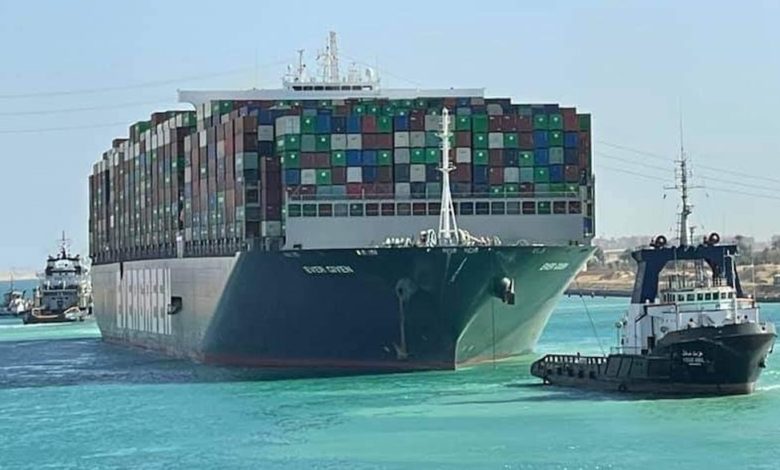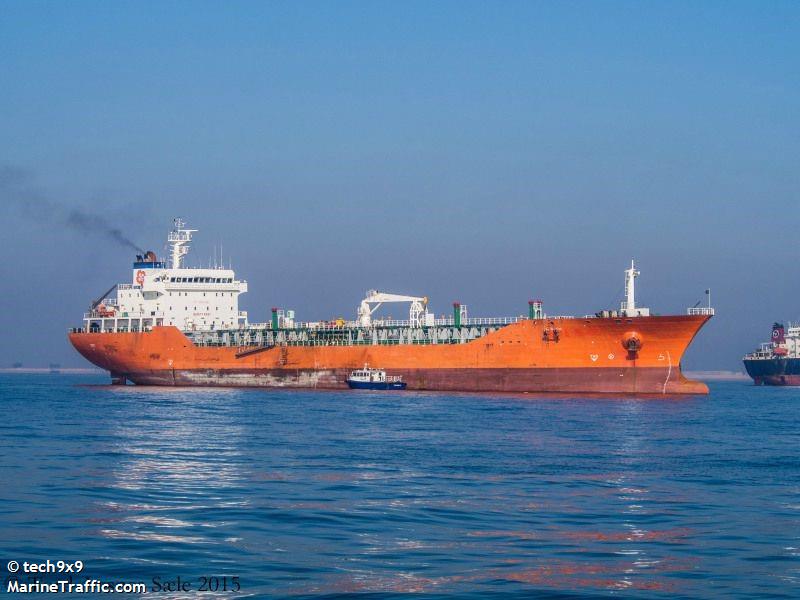Suez planners ponder changes in wake of Ever Given grounding

Top executives at the Suez Canal Authority (SCA) refuse to be drawn on whether changes might need to be made to the southern portion of the waterway in the wake of last week’s headline grabbing grounding of the giant Ever Given boxship.
Canal executives are waiting to see what the accident investigation report states before making any big decisions on dredging – or even adding an extra waterway like what was added in the north of the waterway six years ago. However, a number of experts contacted by Splash suggest action will need to be taken swiftly to avoid further snarl-ups on the key trade artery linking Europe with Asia.
The canal has had 25 groundings in the last 10 years according to insurer Allianz, but nothing to compare to the 199,629 dwt Evergreen ship that blocked the transits of more than 360 ships for six days. Impressively the SCA has managed to work at maximum capacity clearing most of the backlog since the ship was refloated and moved on Monday.
Accident investigators from the canal and also the ship’s flag, Panama, have been onboard the ship this week as work gets under way to ascertain how the Shoei Kisen-owned vessel became lodged in the waterway’s eastern bank.
Investigators will be assessing whether human or mechanical failure played a part in the accident, the role of the two pilots onboard, and whether, as the ship’s owner and manager have insisted, huge surface to cross-winds were to blame.
Preliminary reports from the Panamanian registry indicate that the ship suffered problems with machinery affecting manoeuvrability, something strongly denied by the ship’s owner. Panama did hint that the ship’s size could have been its downfall, noting the vessel was heading north through the canal at a time of high winds and a sandstorm.
“The Ever Given is one of the largest container ships in the world, built in 2018, it is 400 meters long (length), about 59 meters wide (beam) and 15.7 meters deep. She can carry a total of 220,940 tons and has a capacity of 20,388 standard-size 20-foot containers. By having these dimensions, the container walls act as sails and the ship can be subject to gusts of wind,” the Panamanians noted in a release.
Charles Moret from container shipping advisory CTI Consultancy said the ongoing investigations will likely call for more studies and simulations on the effect of banks and wind on today’s growing crop of 20,000+ teu vessels, especially when travelling as fully loaded as they are this year.
On whether upgrades will need to be made to Suez infrastructure, Ninan Oommen Biju, senior port and maritime transport specialist at the World Bank, told Splash: “Enhancing resilience of the key transport corridors is a priority, as well a necessity.”
Given the need for an alternate gateway, Biju said a rail corridor that could transfer volumes at Alexandria or Haifa in the Mediterranean could emerge as a potential option, in addition to a second channel.
Biju’s rail suggestion would in many ways mirror the Sumed Pipeline, a 320 km alternate to the canal that runs from the Gulf of Suez across Egypt to the shores of the Mediterranean, just west of Alexandria.
Biju’s colleague at the World Bank, Martin Humphreys, who serves as lead transport economist, said the Ever Given incident had underlined the need to introduce measures to improve the resilience of critical supply lines and key nodes in the logistics chain.
“I think improving the resilience of the system is a priority, and in the case of the canal, will involve a range of measures, which may or may not involve widening, or a second channel,” Humphreys said.
Ports expert Jonathan Beard, a partner at EY, commented: “The evolution of container shipping has focused on economies of scale to deliver better productivity and lower unit costs – massively larger containerships, higher box exchanges per port call and a dramatic expansion of port and marine infrastructure. On the downside, the deployment of these mega-vessels is not without risks – when things go wrong, the impacts can be equally massive.”
A spokesperson for the SCA said that studies of the maritime course, whether by adding channels or deepening, are subject to periodic studies. The implementation of such projects is linked to economic feasibility. The last such study was completed three months ago.
On August 6, 2015, to much fanfare the SCA inaugurated a 35 km extra channel at the northern end of the waterway, costing a massive $8.2bn.
Lars Jensen from SeaIntelligence Consulting questioned whether there was a cost/benefit case for a second parallel channel in the south. The key first action for the authorities would be to work out why last week’s grounding happened, he said, before making any big investment decisions.
Nils Haupt, a senior director at German line Hapag-Lloyd, put last week’s grounding down to a freak accident, doubting the need for a waterway upgrade.
“As 20,000 teu vessels pass the canal annually without major disruptions I feel it would be exaggerated to ask for expansion. The canal works fine as is,” Haupt said.
Adding a second lane to the southern end of the canal would be prohibitively expensive, argued Sal Mercogliano, an associate professor of history at Campbell University, one of the most high profile commentators on TV during the six-day Ever Given fiasco.
“The more likely prospect for the SCA is to enhance dredging in the canal to widen the navigable channel to lessen the potential of suction pulling the vessel into the sides and allow more room to manoeuvre for wind,” Mercogliano said.
Where the Ever Given grounded last week only between 60 to 70% of the left hand side of the channel is dredged deep.
Mercogliano also suggested the authority should think about revising and enforcing limits to sailing in the one-way sections of the canal for ultra large ships in constrained portions of the Suez. He also called for the requirement of tug escorts and the availability of larger salvage vessels.
“The final determination for the cause of Ever Given will eventually reveal if weather, mechanical, or human error was the root cause and will contribute to the final decision on modifications to the Suez,” Mercogliano concluded.

 boxship.
boxship.
This is a really easy problem to fix:
Close the Canal to big ships in high winds.
With a capacity of 96 transits and a current demand for fifty-odd transits, there is already sufficient “resilience” in place.
Cost: SDRs 0.00
To whom do I address the invoice for my consulting fee of Egyptian £ 10M? (Bargain!)
Your fee is a little low. I would charge $15 mil
For those considering the risks associated with an accident which blocks the passage, this will be a huge exercise. If the accident had been a fully loaded VLCC caught in fireball, I can’t imagine how long that would take for firefighters and the passage to restore traffic. I hope the SCA will soon have a plan for large risks.
Every canal pilot knows what happened to the Ever Given in the Suez Canal. We don’t need a lengthy investigation. You have a ship moving in a wide canal that is not really so wide when you consider the beam of the ship involved. When there is a significant cross wind the ship has to crab in order to move in a straight line. Although there is a speed limit the ship needs to crab less if the ship increases it’s speed. Unfortunately the higher the speed the greater the bernoulli effect that induces “bank suction”. That is why there is a speed limit. A little larger gust of wind, a little too much speed, a moment of inattention and bank suction takes over and the bow runs into the bank. If you manage to avoid one side the over correction buries you in the other. The only solution is to run dead slow and never take your eyes off the heading even for a second.
Now, someone who really undrestand ship’s hydrodinamic, windage, and navigating in restricted waters.
Well said